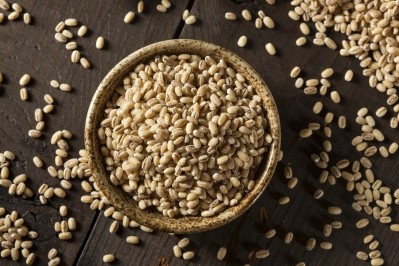Healthy bread: The promise and challenges of maize, oat, barley, sorghum and millet

In a review published in Bakery Products Science and Technology, researchers from a host of institutes looked into the use of maize, oat, barley, sorghum and millet in breads.
All of the non-gluten grains held huge promise for bread development as they were nutrient-rich and cost effective, the researchers said. However, exploitation remained “constrained for several reasons”.
“In bread making applications, the lack of gluten proteins to meet dough viscoelastic and fermentative restrictions has generally constrained the incorporation of substantial amounts of these underused cereals into wheat dough systems to achieve dietary and health-endorsing effects,” they wrote.
The grains lacked endogenous viscoelastic proteins, had difficulties in mimicking the gas retention capability of a gluten network and needed structural agents or expensive additives to restore dough viscoelasticity, they explained.
“In-depth research is needed to determine how to enable the non-gluten forming cereal proteins to provide dough viscoelasticity to bread systems,” they wrote.
In addition, the researchers said nutrient retention needed to be carefully considered. “Retention of micronutrients must be improved and knowledge of endogenous phytochemicals needs to be extended,” they said.
Maize breads: High protein, lower GI
Incorporating maize’s by-product – defatted maize germ – into breads could significantly up the protein content, compared to regular wheat flour, but also reduce the glycemic curve – reducing the insulinogenic effect of the carbohydrate content of wheat bread.
“This suggests the interesting possibility for formulating foods that have a high frequency of consumption, such as bread, with nutrition and health claim labeling,” the researchers wrote.
Portugal’s traditional maize bread broa which used more than 50% maize should be looked at for development ideas, they said. In general, it had been possible to develop acceptable breads that incorporated maize into the matrix, including gluten-free varieties.
Barley breads: Beta-glucans and high fiber
Use of barley fractions in breads was an area of increasing interest because of the beta-glucan content in the grain, the researchers said.
However, barley flour remained “hardly used for human consumption” and proved problematic in bread matrixes, they added. Pure barley had poor baking properties, because the high beta-glucan content decreased water availability for the protein network.
Despite this, barley breads had been successfully developed using up to 30% of the ‘middling’ fraction of whole grain and pearled barley, significantly increasing the beta-glucan and fiber content of the breads.
Oat breads: A nutrient-packed option
“Oat is one of the most adventurous cereal grains for the human diet since it contains naturally high amounts of valuable nutrients such as soluble fibers, proteins, unsaturated fatty acids, vitamins, minerals and phytochemicals,” the researchers wrote.
In addition to its nutritional punch, oat bread was also enjoyed for its nutty, pleasant aroma and excellent moisture retention properties, they said.
However, research suggested that use of more than 20 g oat per 100 g of wheat flour led to tight, highly moist and gummy, unacceptable breads, they added. “Oat
proteins do not possess the unique viscoelastic properties characteristic for wheat gluten, resulting in lower quality products, that is lower bread volume.”
Some experts had, however, succeeded in developing oat breads by adding water and gluten to the formulation, they explained. Developing oat breads without added gluten or water required different processing such as optimizing a sourdough process, they said. Wheat sourdough, for example, could be added.
Sorghum breads: Chronic disease protection and low post-meal GI
Research showed that whole grain sorghum flour in refined wheat flour flat breads had the potential to lower the effect on post-meal blood glucose levels in humans. “This would provide a low glycemic index food product of benefit for the long-term protection from type 2 diabetes mellitus,” the researchers wrote.
In addition, the antioxidant capacity could provide protection from oxidative stress and reduce the risk of chronic diseases such as type 2 diabetes mellitus, cardiovascular disease, and some cancers, they said.
Research showed fermentation worked to contain the nutritional content of the grain.
However, incorporating sorghum into breads was challenging because of certain physiochemical properties that negatively affected the technological properties of bread, the researchers said. Protein in sorghum aggregated during the liquid phase of batter, forming lumps which interfered with the starch gel that led to poor crumb formation. In addition, the high gelatinization temperature of the grain could cause inadequate gelatinization during baking creating white streaks and patches on the crust and a coarse mouth feel.
Millet breads: Calcium rich with dietary fiber
Finger millet was a grain rich in calcium and dietary fiber, the researchers said, as well as a good source of protein, fat and phytochemicals.
It was linked to a number of health benefits because of its ability to lower glycemic and cholesterol levels as well as its antiulcerative properties, they said.
Research showed possibilities of incorporating the grain, in flour form, into biscuits, breads and snacks at various levels. However, millet had not yet entered the international trade markets, they noted.
The future to successfully incorporating these non-gluten grains into breads would be down to optimization of mixed matrixes and advancements in technology, the researchers said.
Source: Bakery Products Science and Technology
Published online ahead of print, doi: 10.1002/9781118792001.ch6
“Barley, Maize, Sorghum, Millet, and Other Cereal Grains”
Authors: W. Zhous, YH. Hui, I. De Leyn, MA. Pagani, CM. Rosell, JD. Selman and N. Therthai


























